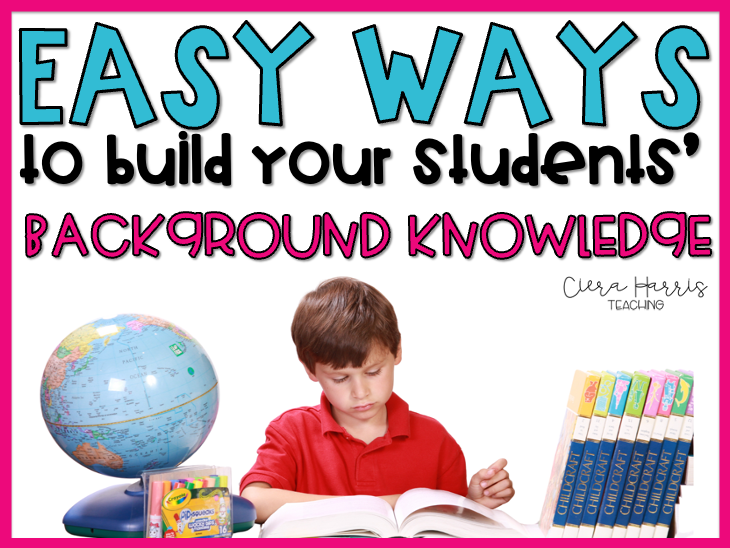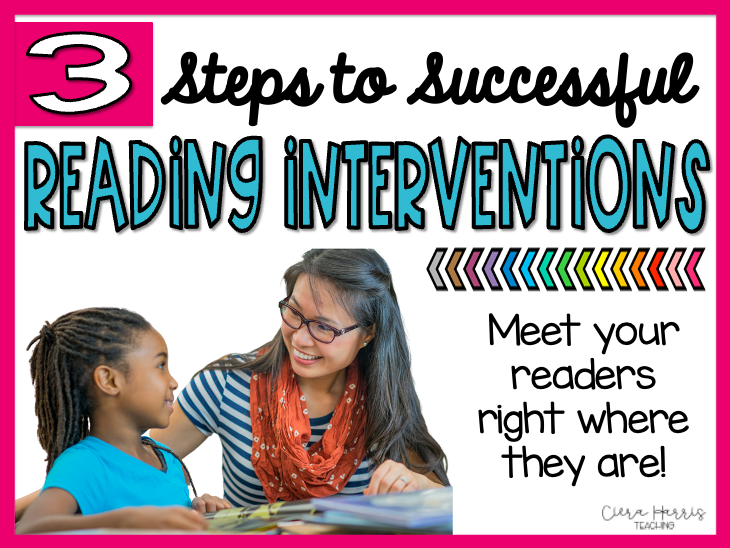Reading comprehension is a massive undertaking in the classroom. Comprehension isn’t a one way street. It’s a multi-level complex system that involved various aspects and factors that play a part in a readers ability to successfully comprehend. Many teachers use reading levels (whether it be guided reading level, Lexile, A.R., etc) to understand how to help their students comprehend better. However, there are so many other factors outside of level that impact a child’s ability to understand the text that they are reading. Let’s break down each of these factors a bit more to truly understand what impacts reading comprehension.

Want to watch the video instead? Check it out below! Make sure to subscribe to get updates on all new content!
Schema and Background Knowledge
Research shows that the best ‘tool’ a reader brings with them to a text is their schema. What a student already knows and understands about a topic when reading drastically impacts their ability to comprehend. One of the very first things that happen in our brains when reading is the frontal lobe actually registers the level of interest and connection that we have to what we are reading. That instant connection can make our brains turn on or turn off.
Students need to understand the power behind their schema and learn how to use it to their advantage when reading. As teachers, we also need to take this into tremendous consideration when picking mentor texts, articles, and activities for our students. We need to make it a priority to give students things to read that they DO have schema on to help them progress their reading comprehension.
Motivation
Like I mentioned before, one of the first things that happens inside the brain when we read is the brain recognizing whether we have schema and interest in the topic we are reading. The more interest we have the more our brain will stay focused, motivated, and the better our memories will recall information. It’s scientific fact. So a student’s motivation level is scientifically in direct correlation with their ability to comprehend a text.
If we want to keep our students motivated, we need to allow them to choose what they read. We need to do what we can to match the right book with the right reader. I love how in the book From Striving to Thriving, by Stephanie Harvey and Annie Ward, they say the phrase ‘Change the book, change the reader’ and it’s SO TRUE! If we can get the students matched with the right book based on their interests, their likings, and their wants, then we won’t need to teach them stamina. They will automatically have it!
Voice and Choice
Let me ask you this question. Are there people right now picking out the books you are reading? Are people finding articles and putting them in front of you? Or putting books in a book tub that they THINK will interest you? Nope! That doesn’t happen. We love to read, as adults, because we get to CHOOSE what we want to read. This needs to happen in our classroom as well. Allow students to have a voice and choose the texts that they read.
But what if I’m trying to teach a specific skill? One of the best tips you can take away from today is this. When finding books and articles for your lessons, take time to find MULTIPLE choices for students to pick from. If you’re doing a Main Idea/Details lesson on Nonfiction articles, why not find and print out 3-4 different choices. Who cares WHAT they read as long as we’re all working on the same goal, right? If that is going to increase their motivation, engagement, and overall ability to comprehend, then it’s worth the extra 5 minutes it might take to find the articles.
Genre
 A book is a book is a book is true and not true at the same time. Books may all look alike on the outside but on the inside they are all structured and written in unique ways. That’s why there are genres. Classifications of the types of books that we read. If a student doesn’t have exposure to a specific type of genre he/she is reading, it can impact their comprehension. This is one of the reasons why students typically struggle with nonfiction. Growing up, their parents usually read fiction out loud to them. So when they get to school and begin to read nonfiction, they struggle. They are used to characters, plot, and the typical fictional text structure and then we throw them into a new genre. Of course they are going to lack comprehension!
A book is a book is a book is true and not true at the same time. Books may all look alike on the outside but on the inside they are all structured and written in unique ways. That’s why there are genres. Classifications of the types of books that we read. If a student doesn’t have exposure to a specific type of genre he/she is reading, it can impact their comprehension. This is one of the reasons why students typically struggle with nonfiction. Growing up, their parents usually read fiction out loud to them. So when they get to school and begin to read nonfiction, they struggle. They are used to characters, plot, and the typical fictional text structure and then we throw them into a new genre. Of course they are going to lack comprehension!
It’s very important to expose students to as many genres as we can but also to take the time to teach the characteristics of each genre. This allows students to pick up on the specific differences between the genres and identify them as they are reading.
Text Structure
A typical fictional text will be written with a typical fictional text structure (think story elements and plot diagram). So when the text structure changes, it can throw students off. If authors use elements such as flashbacks, prequels, and areas in the text where the character is speaking TO the reader and not actual dialogue. All of those small text structural pieces can impact a reader’s ability to understand what’s going on the text. It can confuse the reader.
Culture
Figurative language, slang, multiple meaning words, all have to do with language and culture. All of this language is embedded into the books that we read in the classroom. A student who has a different cultural background may not pick up on these cues in a text and struggle to what’s going on in the story. Even within our own country, there are phrases used in some parts and not others. These language diversities put our students at risk of not comprehending the story.
Also, the overall relevancy of the story itself. Students in America reading a story about a young girl celebrating her Quinceanera (a celebration of a girl’s 15th birthday) will draw confusion. It’s important to identify these language and cultural components of a book and give students support and scaffolding where necessary instead of simply leaving them to understand and comprehend independently.
Memory
Memory and age go hand in hand. The younger our students ,the less we ask of them to remember in regards to comprehension and the other way around. It’s important to keep attention spans and memory in mind when giving students text to read.
A student who struggles reading a longer text might have memory issues. Memory is a development component of a student’s brain and depending on their age and maturity, it might not be completely developed yet. If you’re finding that typical texts and even easier texts are still too difficult for a student to remember and recall details, try doing a few memory activities with him/her throughout the week to improve their memory abilities.
Discussion
True comprehension isn’t a one way street. It takes multiple view points other than the reader and author to true dig deeper into the text. Many time, unfortunately, we rely on a student to figure it out all alone. AS As adults, we love to talk about what we read, share our findings, question with others, and get another perspective. This is true for students. We will find that when given the chance to talk with others, their comprehension improves. The students ability and availability to discuss a text can directly impact comprehension.
Access to Instruction
A reader needs access to a teacher who understands reading and how to teach it. A teacher who models the thinking process and gives an insider look at what a readers brain looks and feels like when reading. If the reader is denied this, meaning they have a teacher who doesn’t quite understand how to teach reading (yet), then the reader could struggle picking up on the true navigation that is required to read and comprehend.
This is why it’s so important for teachers to continue their education about reading instruction and comprehension outside of their undergrad years. Simply reading the newly published professional development books is a great place to start!
Fluency
We all know that fluency can impact a students’ ability to comprehend. The weaker the fluency the less likely deep comprehension is taking place. However, we can still teach our struggling readers (with fluency) to think to help progress them in comprehension while they work on their fluency. If we decide to work on fluency and comprehension separately, we are only creating a bigger gap for the student to get caught up on later when they are ‘ready’ to focus on comprehension.
Fluency and comprehension need to be taught simultaneously. Comprehension is about thinking and fluency is about the words. I have a fantastic blog post all about teaching students who struggle with fluency how to comprehend if you’re looking for strategies to make it work!
So as you can see, comprehension is MUCH more than just about a reading level. Taking all of these points into consideration can help make your readers go from steady to warp speed! If you’d like to save this post for later, make sure to pin the image below!






